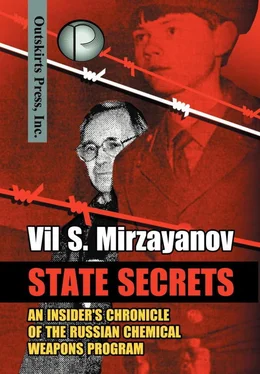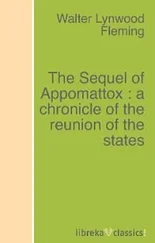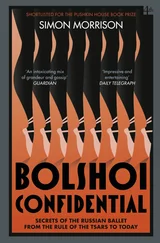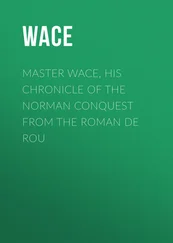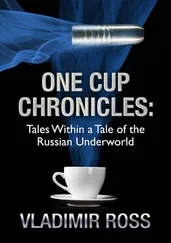According to the results of the kinetic research carried out by Valeri Lebedev, a senior researcher at GOSNIIOKhT, VX gas produced by mixing semi-product QL [26] Di-isopropyl-aminoethylmethyl-phosphonate.
with sulfur, should disintegrate within 10-15 seconds, since the temperature in the binary reactor would exceed more 300 degrees Celsius in this time interval. This is exactly why the American military chemists, after fifteen years of unsuccessful efforts and expenditures of more than $15 million on this project, were forced to “create holes” in the bodies of their binary reactors for the chemical weapon (CW) “Blue-8”. These holes opened with special explosives 10-11 seconds after the startup of the mechanical mixer and at the beginning of the reaction between QL and the powdered sulfur. Clearly the key question became how to store this sulfur in a reactor for a long period of time without developing lumps and caking, so that it could be used effectively.
Ivin was in charge of a large laboratory in GOSNIIOKhT, for the synthesis of newly perspective chemical agents. He was a talented scientist who distinguished himself by his amicable relations with everyone whom he worked with, and he profited from universal respect at the institute and its branches.
The original idea for a binary chemical weapon was proposed and realized in Ivin’s laboratory between 1971-1972, on the basis of the thiol ethers (Substance 33 and others of this sort) as well as on the basis of the fluoro ethers (soman, sarin and others). At first it was proposed as a new technological approach for production of sarin and soman.
As would be expected, it looked like a most attractive and simple system for producing sarin. Felix Ponomarenko, who was a graduate student at the time, definitely achieved success in this area. His idea was based on the reaction between the cyanide ether of methylfluorophosphonic acid and iso-propyl alcohol. The rate of the reaction was amazingly high and the yield of final product was more than 80 %. His results became known to some military people from the Directorate of the Chief of the Chemical Troops (UNKhV), who joined with some chemists from Military Unit 61469 in Shikhany, stole his work, and quickly filed for a patent for his invention. Of course this was done entirely without Ivin’s or Ponomarenko’s participation.
A really scandalous standoff developed, since Ponomarenko had already included the results of his research in his dissertation, and the fate of the dissertation depended to a considerable extent on UNKhV’s judgment of his work. The military specialists came forth with a “compromise”. They did not back away from their “invention”, but they gave Ponomarenko’s dissertation a favorable judgment, and he safely defended it.
Deputy Director Konstantin Guskov was impassioned at that time by this highly promising theme, which was given the code name “Khoryok” (translates as ferret) in different indices. He conducted this work in the Volgograd and Shikhany branches of GOSNIIOKhT. To tell the truth I didn’t have any knowledge about this “Khoryok” business until 1977.
One winter day in 1977, Guskov called and asked me to come to him for an urgent discussion. He told me that the binary bomb would be tested in Shikhany, and he personally asked me to help with the analyses of the field samples. Since I had already developed gas chromatographic (GC) methods of analysis for different purposes, including for conducting various tests in Department “RP” (which was in charge of preparation and conducting field tests), my methods could easily be adjusted for analyzing the field tested samples at Shikhany. So, I agreed to go and participate in the testing.
Intermediate non-toxic variants of the binary bomb were being tested. One of the compounds selected was the cyan ether of O-isobutylmethylphosphonic acid, and the other was N, N-diethylaminoethyl alcohol. The resulting reaction produced a non-toxic oxide analogue of Substance 33, O-isobutyl-O-2 – diethylaminoethyl-methylphosphonate according to:
O-i-C 4H 9 O-i-C 4H 9
D D
CH 3-P=O + HO-CH 2-CH 2-N(C 2H 5) 2’ CH 3-P=O
\ \
CN O-CH 2-CH 2-N(C 2H 5) 2
I was told that laboratory studies proved that the reaction between these reagents was going at a high rate and the yield of final product was also more than satisfactory, and so the outcome was not in doubt.
On the appointed day, we drove to the polygon (test site), where we could observe the air and the field from one of the shelters. We waited for an airplane to appear. The military airport was located 15 kilometers away in the town of Beketovka, and we saw the airplane take off, and then rise to gain the necessary altitude. The soldiers accompanying us were ordered to go to the basement so they could not observe the experiment that was about to take place. Then I saw that the transport airplane was practically right over us at a low altitude. Something blasted out just below the plane, and a white mist appeared which turned red, reminding me of holiday fireworks. I knew that dye was added to the mixture in order to make the reaction visible.
They set up little squares in a strict order on the testing field, with metallic trays on which they placed strips of filter paper for adsorption of the drops of the binary chemical agent analog they were testing. The paper strips should have had stains from the red dye that was added to one of the reagents. Specially trained soldiers collected the trays with the filter papers and delivered them to the analytical laboratory. Chemical compounds were extracted from the strips with a solvent. Then my assistant Boris Dubin and I analyzed those samples using a Varian 1800 Gas Chromatograph with a thermionic detector, for the selective determination of the final product, which was the O-analog of Substance 33.
Our analysis showed a very low level of efficiency for the binary bomb, with the yield of the final product being only about 7%. This poor result was disappointing, but no one tried to cast doubt on my results, because there were very few red stains on the filter paper strips, which would have been direct evidence that they had been exposed to a small quantity of the final reaction product. For me it was clear that this was the result of faulty construction design work and a short reaction time between the binary components.
I believe Guskov also understood this and decided not to test a second bomb. To his dismay he was facing huge opposition to this project. Since there were no miraculous results, his bosses lost all interest in it on every level. However, just in case an urgent need should arise, the subject was handed over to (or rather forced upon) Drozd.
This situation clearly reflected the negative mind-set held by the Construction Bureau “Basalt”, the Military-Industrial Commission of the Central Committee of the CPSU and the leadership of the army, toward researching binary weapons.
An interdepartmental commission under the leadership of Vladimir Listov, who was then the Minister of Chemical Industry, decided that “the Army doesn’t need less effective wares than the mono-variant.” The mono-variant was clearly understood as a chemical agent. After this decision, the topic of binary weapons was shelved and existed in practicality, thanks only to the enthusiasm of individual researchers. This very idea seemed intriguing to me.
Ivin was instrumental in helping the synthesis laboratories in Volsk (Shikhany) and in Volgograd get started. I suppose that the appearance of such a talented scientist as Petr Kirpichev, the author of the new and highly effective chemical agent in Shikhany, was a result of his fruitful activities.
After Ivin’s premature death at the end of 1980, his laboratory fell under the leadership of Evgeny Fokin, a man who lacked any kind of specialization. Partially, it was also supervised by the director of the institute, since he had to participate in meaningful scientific work in a laboratory in order to become a corresponding member of the U.S.S.R. Academy of Sciences. Later, Evgeny Fokin had to turn over part of his laboratory to Yuri Kondratiev.
Читать дальше
